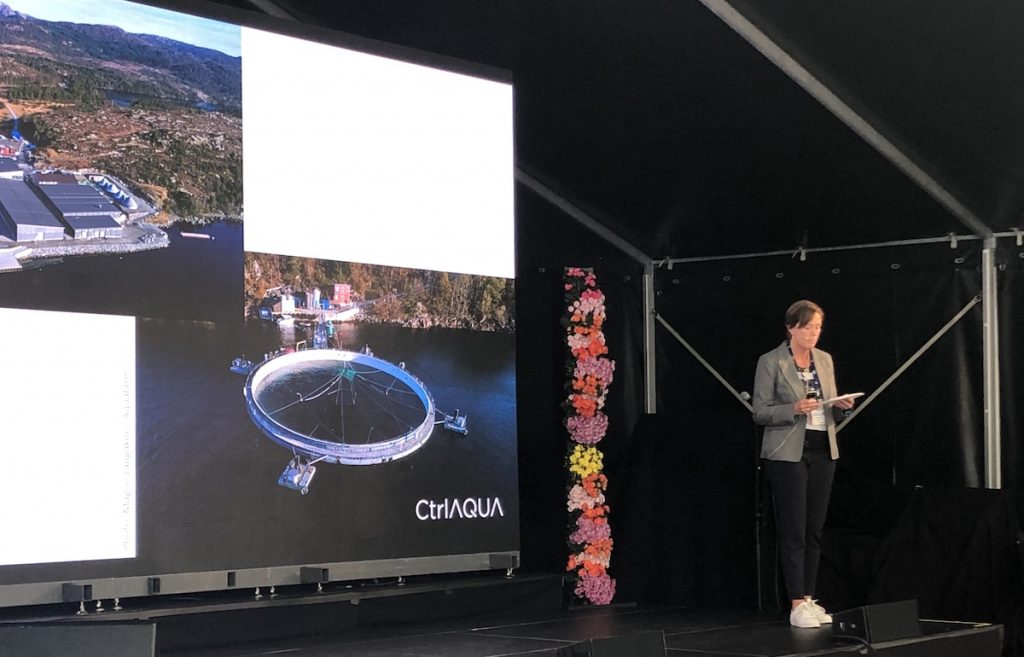
Scientists uphold fish welfare amid technology innovations
August 23, 2019
By
Mari-Len De Guzman
 Asa Espmark, Nofima senior scientist
Asa Espmark, Nofima senior scientist TRONDHEIM, Norway – Fish welfare was one of the overarching themes in technology discussions at this year’s Aqua Nor 2019.
In her presentation at the Nofima-led seminar, “Fish biology meets new technology,” Asa Espmark stressed the importance to “take the fish side of the story” in the rush to develop new technologies for aquaculture.
“Fish should be given the correct opportunity and conditions to cope with and have a good welfare in the system that you provide them with. I think that it is our most important duty,” said Espmark, senior scientist at Nofima and director of CtrlAQUA – the largest research community engaged in studying closed containment aquaculture facilities.
With sea lice being the biggest threat for sea-based salmon aquaculture, the development of new technology to combat this challenge have increased dramatically, said Espmark. However, she cautioned, these new technologies must not forget about the “star in the game” – the fish.
“This means the development must sometimes step back and wait for the fish approval and that the fish can show that they are coping well,” she said.
One of the major innovations being pushed to combat the sea lice problem is by moving production inland, from egg to slaughter. Often, however, these land-based, closed containment systems fail to engage the people who know aquaculture, Espmark noted.
“We need responsible technology development, and this is best achieved with better collaboration between all decision-making stakeholders such as industry, R&D, food safety authority, directorate of fisheries, politicians and NGOs.”
Although the closed containment and semi-closed containment and recirculating aquaculture systems offer great promise for the salmon farming industry, the Nofima research scientist said a number of challenges still need to be addressed.
One of the challenges, she said, is the need to establish the best protocol for production of post smolt.
“There are many different protocols in practice, including different light and salinity gradients. And we are hoping to find the best protocol within the many different conditions. But this takes time and it is important to follow fish all the way to slaughter in order to understand the long-term effect of the different protocols. One thing is for sure, one size does not fit all,” Espmark said.
Researchers at Nofima have also been developing various tools to measure and monitor fish welfare in aquaculture systems.
In his presentation, Nofima scientist Christoper Noble stressed the need to provide the right tools to identify the challenges fish face in aquaculture production. To help fish farmers monitor fish welfare, Nofima has developed fact sheets for numerous farmed species, including a welfare indicator for farmed salmon.
“Welfare for animals is fluid and it changes from minute to minute,” Noble said. “Diligence and monitoring is key, and this is where we need technology.”
He said innovations in artificial intelligence, machine learning, underwater camera systems and acoustic technology will critical in developing new tools to monitor and ensure fish health and welfare.
“We need competence, and a multidisciplinary team to make sure the data we collect have real value and we interpret them in the right way,” Noble said.
Espmark said despite the dramatic increase in new technologies for the aquaculture sector, the industry needs to ensure that the health and welfare of the fish is not being lost.
“We have taken the fish from the wild into captivity and now into closed and semi-closed containment,” she said. “But the fish are not yet fully evolutionally adopted to these conditions. It is our responsibility to put the fish interest first and ask them how they are coping in these systems that we provide them with (through research).”
Advertisement
- Business accelerator program names new advisory board
- Consolidation creates one-stop-shop for aquaculture





